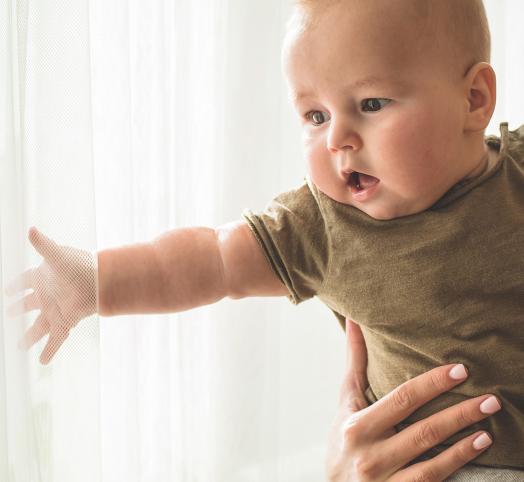Hydration, good habits for keeping your baby's skin soft and comfortable
Updated on March 22, 2023
Created on July 24, 2019
Find your nearest point of sale here
Updated on March 22, 2023
Created on July 24, 2019

Up until age 2, your child’s skin is delicate and immature: it has few defenses against harsh elements (cold, wind, sun, dry air, etc.), it’s easily irritated, and it’s sometimes prone to red blotches.
But your baby’s skin is also rich in unique and valuable cell potential that it’s vital to protect. So you need to give it very special care and use appropriate products.
Here's our advice for ensuring your baby’s skin remains soft, flexible and comfortable day after day!
- Always choose skin care products that are specially formulated for a baby’s skin. They should be hypoallergenic and tested under the supervision of dermatologists and pediatricians.
- After his daily bath time, carefully moisturize your baby's entire body and face using a moisturizing cream and body lotion. If your baby's skin is dry, use cold cream: a nourishing cream for their face and a nourishing lotion for their body.
- You can warm the product with the tips of your fingers. That way, your baby won't be surprised by the temperature of the cream and will accept it more easily.
- Take this opportunity to briefly massage your baby if he enjoys it: gently massage the baby’s entire body with your moisturizing product until it has fully penetrated the skin, or use a massage oil specially designed for babies. Not only is massage very effective for relaxing your baby as preparation for sleep, it’s also a wonderful opportunity to bond with your child.
- Remember to check the area behind your baby’s ears on a regular basis. This area is often overlooked, but it’s prone to rashes and dryness.
- For your baby’s lips and exposed sensitive areas, use a moisturizing stick.
- When you go out with your baby during the autumn or winter months, cover sensitive areas completely (head, nose, throat, ears, hands, etc.) with a hat, scarf, mittens and so on. You’ll protect the child against not only colds, but also the drying effects of chilly air.